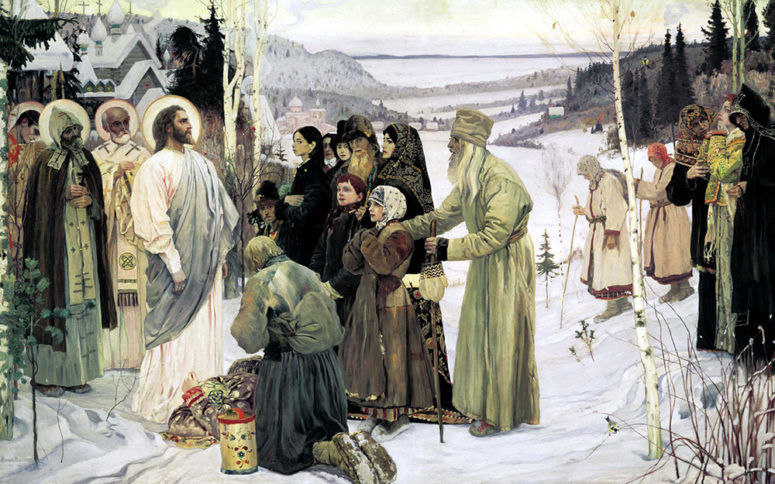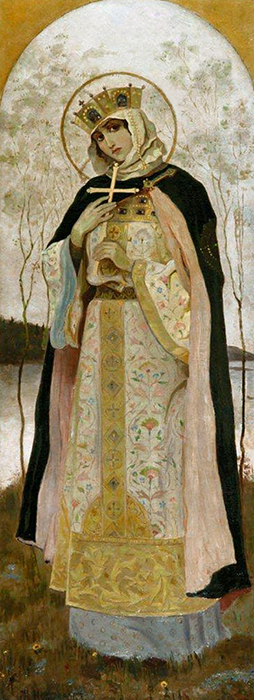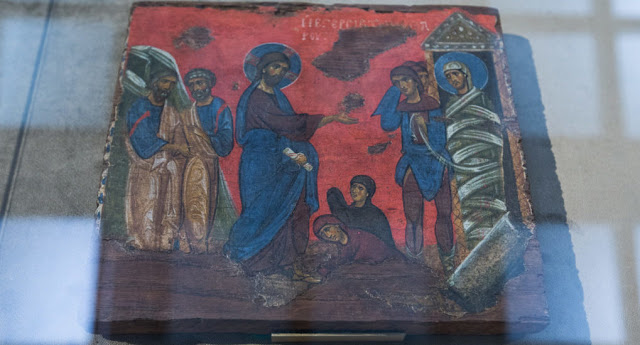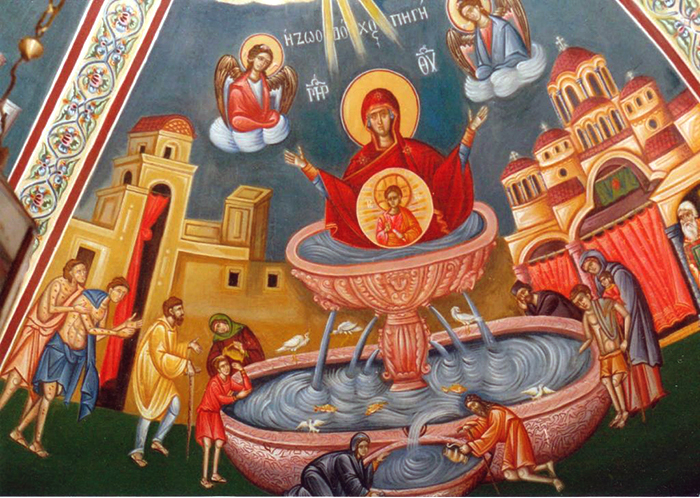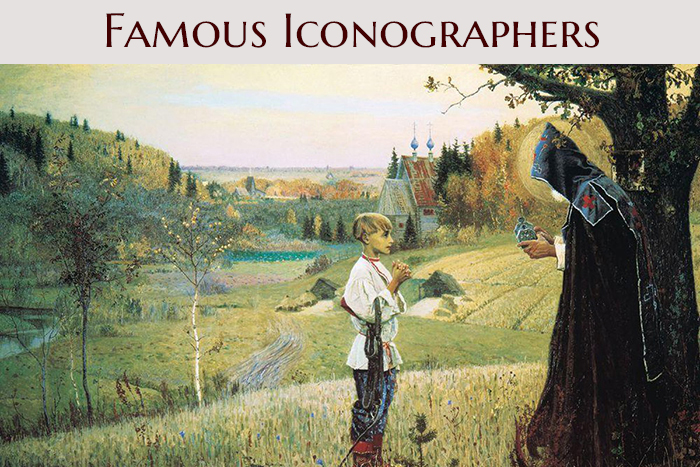
Mikhail Nesterov was not a monumentalist by the nature of his talent, but rather a lyricist. For almost twenty years of his creative biography, however, he decorated churches and painted icons. The first church to be decorated by Nesterov was St. Vladimir’s Cathedral in Kiev, and the last one was the Holy Transfiguration Cathedral in Sumy.
Mikhail Nesterov was invited to participate in the mural painting of St. Vladimir’s Cathedral in Kiev after having painted his work The Vision to the Youth Bartholomew.
Nesterov was drawn to monumental painting, and he was also fascinated by the personality of Viktor Vasnetsov, who also worked on the murals of St. Vladimir’s Cathedral. Nesterov admired the realistic and picturesque frescoes by Vasnetsov; he used to say that “they are like living people”. At first he began by imitating Vasnetsov, but then he found his own style.
Compared to Vasnetsov’s paintings, which are full of energy and audacity, Nesterov’s paintings are more lyrical. They are even closer to the art nouveau style due to their decorative flatness of composition, the refined and incorporeal images, the subtlety of the silver color. The real life remains the source of Nesterov’s inspiration in his church works: he paints all his images from nature; the living residents of Kiev are his prototypes.
Nesterov paints two big pieces The Nativity of Christ and The Resurrection in the altar part of the temple (in the altar and sacristy). He paints icons for iconostases. He also paints a fresco of Baptism in the baptismal part of the church.
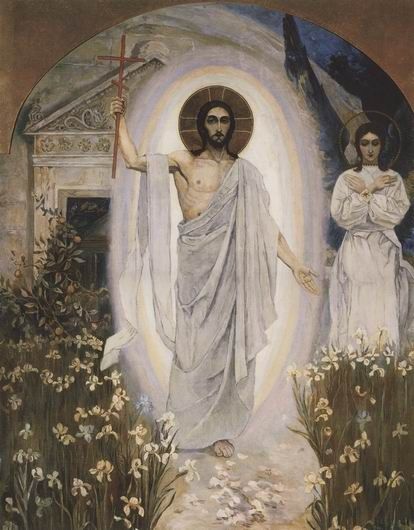

The specific nature of Nesterov’s perspective often conflicted with his desire to portray not just a real image, but the concept of it, a certain abstract idea of the spiritual life of this or that person. Perhaps that is why Nesterov’s icons, which are conceptual by definition, were so often accompanied by naturalistic details, which did not go well with the images.
Nesterov goes even further on the path of convergence with the art nouveau style in his paintings for the St. Alexander Nevsky Church in Abastumani, Georgia. The artist was given full creative freedom. The project was commissioned by the heir to the Russian throne, Prince George, who approved Nesterov’s sketches and suggested that he get acquainted with some samples of paintings in famous Caucasian temples.
Nesterov studied the frescoes and mosaics of the Gelati Monastery, the church in Mtskheta, the Sapara Monastery, and the Zion Cathedral in Tiflis, but did not consider it necessary to imitate what he saw, although it made a strong impression on him. He only sought to preserve the effect of the gentle radiance of the colors seen in the temple of the Zarzma village in his paintings. In the end, however, he was not satisfied with his work in Georgia.
More significant to him were his monumental paintings in the church of the St. Martha and St. Mary’s Convent in Moscow, built by the architect Shchusev on commission of the Grand Princess Elizabeth Feodorovna. The architect built the Church of the Holy Protection in the style of old Novgorod and Pskov architecture. Nesterov did not want to make his paintings look like ancient Novgorod frescoes, although they had just been cleared from the later additions and made many artists admire their monumental splendor. It was only in the images made for the iconostasis that he used the succinct lines and generalized silhouettes of the original sources. He painted most of the paintings based on specific visual impressions. He paints sketches for the scene “Christ at Martha’s and Mary’s house” in Italy and retains impressionistic polychromaticity, the blue and purple shadows of spring that were new for church paintings.
“The convent in honor of Mary and Martha and the church in honor of the Holy Protection are erected at the personal expense of the Grand Princess. This is the work of her heart. This whole idea, which is expected to last for eternity, will cost a lot of money, so the sum assigned to “art” is relatively small; since my long-time dream is to leave something worthwhile in Moscow, I accepted the job (to the Grand Princess’s sincere pleasure), despite the modest pay. And having accepted it, of course, I committed myself entirely to this project”, Nesterov wrote to A.A. Turygin.
The iconostasis and the Royal Door were painted by Nesterov, as well as frescoes. A special place among them belongs to the Path to Christ piece situated above the western refectory arch. Essentially, it is an artistic reflection of the key topic of the Gospel – selfless service as a path that leads to God.
However, the stucco was poorly made, so the main piece, The Path to Christ, disappeared in 1909 because the paints got flaky. Mikhail Nesterov then decides to repaint the mural but on a copper plate instead.

At some point, the artist becomes desperate. “I was more and more convinced that the walls of the temples were beyond my control. The pantheistic religious outlook, which is typical of me, could hardly be possible on temple walls, and, moreover, in the icons on iconostases…”
The artist’s decision to give up painting for the Church, which slowly developed in his critical self-consciousness, was predetermined. However, his God-sent artistic talent manifested itself in its entirety in his later works, which glorified the Holy Russia.

